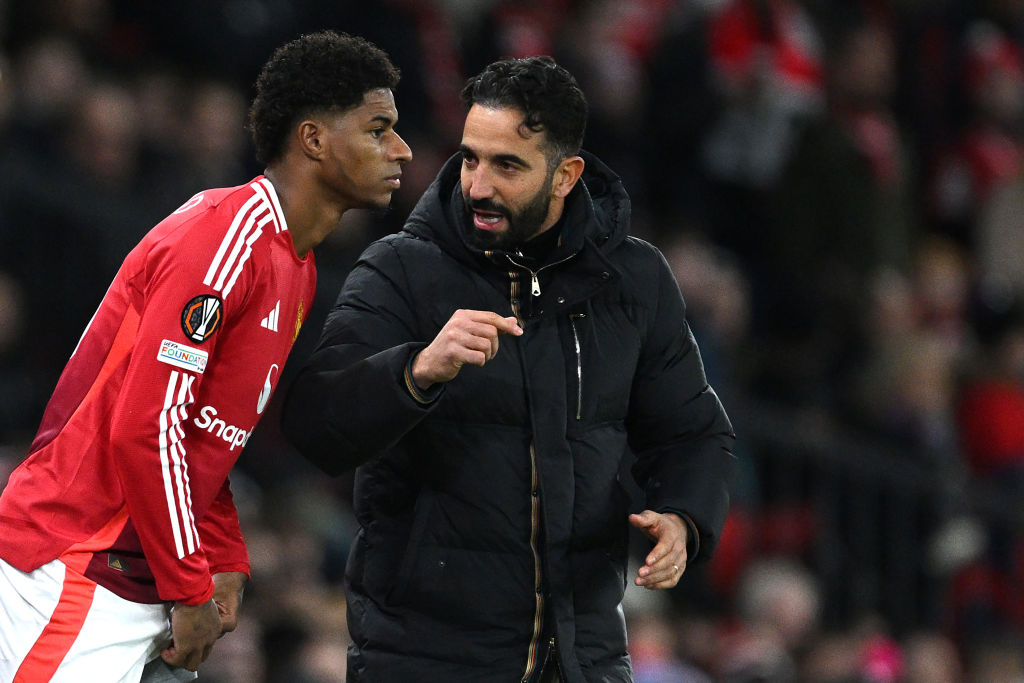Marcus Rashford - by the men who made him
Marcus Rashford's brother and former youth team coaches explain his evolution from a football mad baby to one of the game's brightest stars

Melanie Rashford picked up her baby boy and sat him in a high chair, as he kicked his little legs and chewed on his dummy in excitement. His eyes were fixed on the TV screen in the family home in Withington, but he wasn’t interested in watching an episode of Teletubbies or Postman Pat like other kids of his age. It was a football match that had captured his attention, though his mother did not mind, so long as it gave her some quiet before her next shift at the bookmakers.
Marcus was only seven-months-old but he had already fallen for the game and unwittingly taken his first steps on his ascent to stardom. He didn’t know it yet, and nor did his family, but he was a little boy with an extraordinary gift who was about to begin an 18-year journey to becoming an overnight sensation. He did not travel alone; along the way, family, mentors, idols and rivals shaped his evolution from a football-mad baby to one of the game’s most exciting talents.
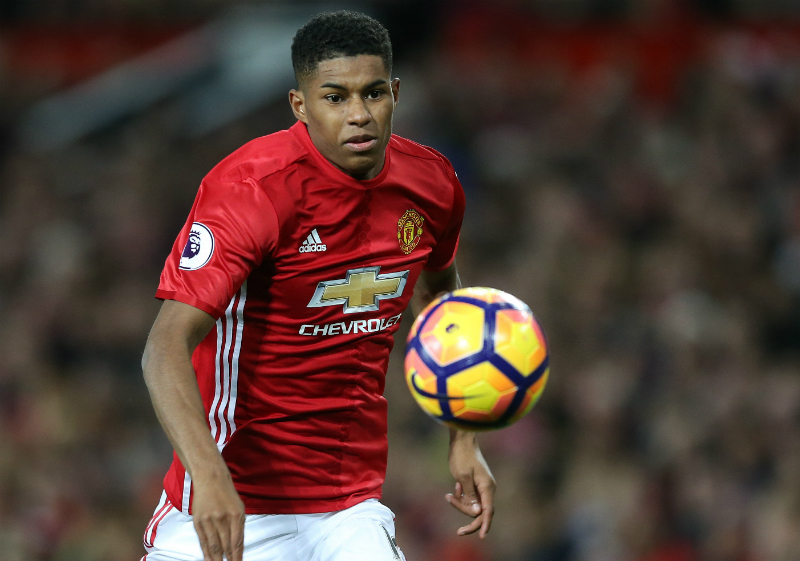
Born on October 31, 1997, the youngest member of the Rashford clan was thrown in at the deep end from the moment he could stand on his own two feet. He’d often look out of the living room window and watch brothers Dane and Dwaine play with their friends in the front garden. That small patch of grass became his first football pitch. “At first, he got under our feet, but very quickly he learned how to balance himself and keep the ball,” Dwaine tells FourFourTwo.
His family remember Marcus as an ordinary, happy kid, who loved video games and playing with his friends, but it soon became clear he had a special talent. Shortly after his fifth birthday, Dwaine took his little brother to his local club, Fletcher Moss Rangers, and paid the £2 fee so he could take part in a training session. He was curious to see how he would fare and was astonished to see him play a through ball which cut through three players and played a team-mate in on goal. “He told me he learnt how to do it by playing Fifa!” recalls Dwaine.
The bobbly pitches on Merseybank playing fields were the perfect place to start his football education. Fletcher Moss has been a hotbed for talent for 31 years. Wes Brown, Danny Welbeck, Ravel Morrison, Tyler Blackett and Jesse Lingard all played for the amateur side before joining Manchester United. Sixteen of the their former players are currently representing England at various age groups. Countless others, including Sheffield Wednesday and Republic of Ireland goalkeeper, Keiren Westwood, have gone on to enjoy professional careers.
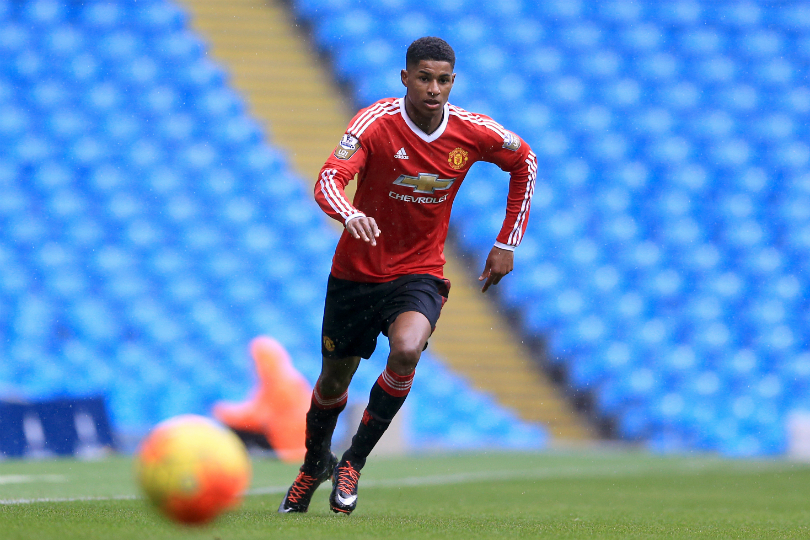
In the two years that followed Rashford’s first training session, the club realised they had unearthed another star. “Marcus was on a different level to other boys playing Sunday League football,” the club’s academy development officer, Dave Horrocks, says to FFT. He was soon winning games on his own and his former coach still remembers the day when his genius became apparent. Rashford and his under-7 team-mates were playing in a tournament in Manchester when Horrocks received a phone call from another of the club’s coaches. “He told me Marcus was running the show and said he could have played with two balls on the pitch.” Hours later the six-year-old attended a presentation afternoon and arrived with the trophy in his hand and a winners’ medal around his neck.
Fifteen scouts from Newcastle, Crewe, Everton, Liverpool, Manchester City, United and a host of other clubs, had watched him that afternoon. Initially, he started training with City at their old Platt’s Lane complex before United intervened by calling Horrocks and asking him to drive him to the Cliff. Rashford was a United fan and his family also felt the club would be a better fit for his attacking qualities than their Manchester rivals. “Marcus had a very individual style,” says Dwaine. “He was skillful and good in one v one situations – we thought United would really get the best out of him.”
Get FourFourTwo Newsletter
The best features, fun and footballing quizzes, straight to your inbox every week.
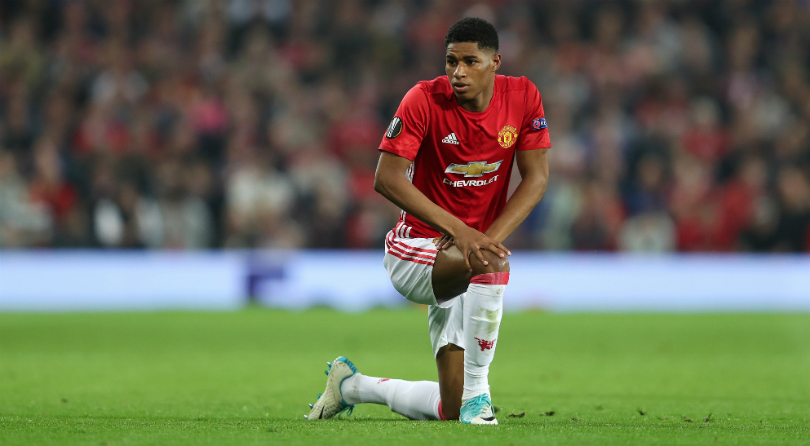
He was seven when he joined the club’s pre-academy programme, where he immediately impressed coaching staff with his physical prowess. “One of the first things we look at in young players is how they move, with and without the ball,” United’s former youth coach Paul McGuinness, says to FFT. “You can never be certain, but it gives us a good idea whether they will go on to become athletic. I have seen many talented youngsters who are technically very good, but are finished by 12 or 13 because athletically they are not quite good enough. But Marcus was a great mover, he was very quick and had a great flow about him.”
Rashford’s athletic talents also meant he flourished at other sports. He excelled at cricket as a batsman and bowler, and also showed an aptitude for tennis, table tennis and snooker. “He had fantastic eye-hand co-ordination,” says Dwaine. To this day, he still watches the occasional test match on TV, but his one true love was always football. As he got a bit older, he began to join Dwaine and his friends for a kickabout after they had finished playing for their Sunday League team. “The boys buzzed off him, they could see how good he was,” says Dwaine. “I also felt that playing with and socialising with older boys would be really good for his development in the long run – he would not be fazed by anything.”
United agreed. When he was 11, he became the youngest ever player to be selected for the Man United Schoolboy Scholars [MANUSS] scheme. The most talented boys from every age group between the ages of 12 and 16 were picked to train alongside one another in mixed age groups on a full-time programme. Every player also had to agree to move into digs and go to school at the club’s partner academy, Ashton-on-Mersey, in Sale. After careful thought, his family agreed to let him live with Maria, a host who had previously looked after Gerard Pique. “It was a big decision to let him go there,” recalls Dwaine. “We met her a few times and felt he would be happy. He was living with another academy lad [Derby County midfielder Tom Lawrence,] so we knew he’d be ok.”
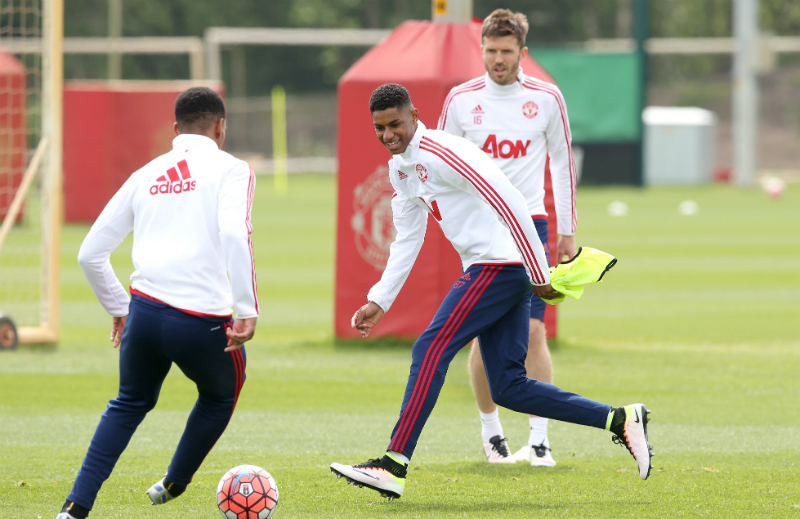
Rashford’s digs were only a short distance away from his family home, while a club minibus drove him to and from school. Training sessions followed every weekday in the afternoon, while one full day per week was spent at the club. He quickly began to thrive playing alongside older players - just as he had done with his two brothers. United built several cage pitches to recreate school playground learning, where older and younger players would compete in small spaces. “They would play 8v8 or 7v7 to increase their speed of thought and improve their skills,” says McGuinness. “At 12, Rashford was playing cage football with Paul Pogba, Jesse Lingard and Ravel Morrison, who were 16. “He learned from them, but he could also express himself more. With his own age group he might only play a single one one-two, but with Pogba, he could play two or three.”
His box of tricks wasn’t just down to having a kickabout with Pogba, it was the result of an obsessive streak, which saw him rack up thousands of hours of playing and watching football. United’s under-16 coach Neil Ryan used to take him to and from training and still remembers how every journey started and finished. “When I arrived he would be doing tricks outside the house,” he says to FFT. “He used kick the ball on to the roof and then control it with different parts of his body as it came down. When I dropped him off he went straight to the park or watched players like Ronaldo and Messi on TV. Studying them definitely influenced his game.”
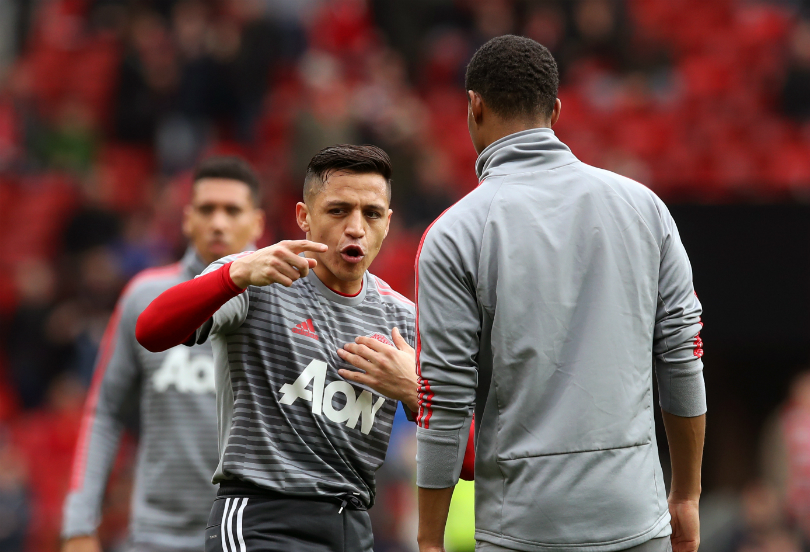
While his skills flourished, a massive growth spurt over a period of 12 months hindered his progress. “It really affected him,” says Ryan. “He wasn’t moving as fluently and he seemed to have lost all his pace. At one point, he even wanted to start playing as a holding midfielder – that was his way of coping with his loss of pace.” Fortunately, United had seen it all before with the likes of Lingard and knew patience was key as he adapted to his new body. “Young players have dips in form and Marcus was no different,” continues Ryan. “There were games when you didn’t know he was on the pitch, but then he would set the place alight the following week with his skills. We knew he would get stronger, we knew his pace would return and we knew he would compete against bigger players.”
It was during this period that his coaches also realised he had the mental robustness to deal with professional football. He did extra work to improve his core strength and could often be seen competing in press up competitions with team-mate Axel Tuanzebe. “During that period, he would play against the older boys, grit his teeth and show a real determination just to compete,” says Ryan. “That was just as important to us as the tricks.” His positivity also endeared him to his peers. “Even during the tough times he had a smile on face,” he continues. “He is a popular lad and I struggle to remember a single day where he gave us any trouble in the academy.”
Rashford had initially been a traditional right-winger, but such was his talent, he began to play in a variety of attacking roles. “He reminded me a little bit of Danny Welbeck,” says McGuinness. “Danny could play in different positions and was a good technician, but one thing we wanted to do with Marcus, which perhaps we should have done earlier with Danny, was to turn him into a real goalscorer. Marcus was enjoying playing as a No 10, but we said to him ‘Look, you are fast, we think you are going to grow to six-foot-plus, and you can beat men – you are the archetypal shape for a centre-forward - but you need to score more goals.”
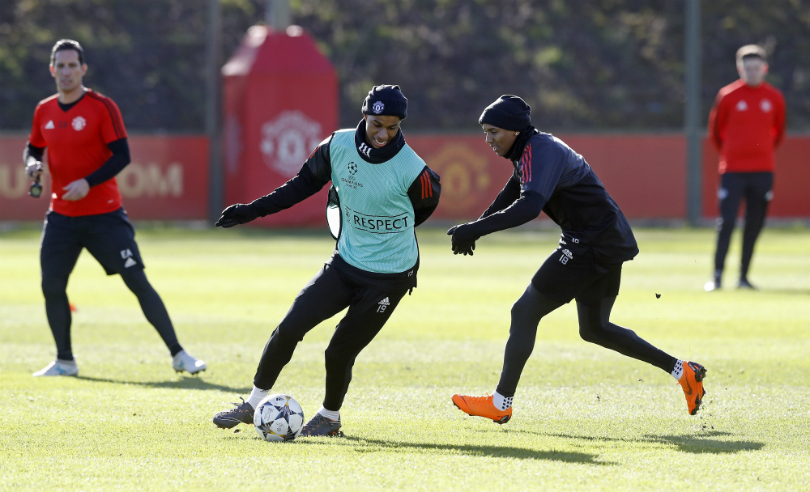
So began a meticulous two-year schooling in the art of goalscoring. Under-18s coach Colin Little, worked one-on-one with him to improve his runs into the box. “He was extremely good at dropping deep, but I wanted him to learn how to start playing on the blind side,” continues McGuinness. “One thing we practiced a lot was receiving the ball on the half turn. We told him to start making eye contact with the passer so he could make runs in behind at the right time and then finish. If he could not do that, he then needed to come short and run at players.“
Rashford’s education continued at home as he read up on a model the club had created to develop strikers. “He would text me and tell me he was reading it and ask questions,” says McGuinness. “I remember him sending me messages about other players he was watching. He said ‘Paul, did you see the way Sergio Aguero ran in behind? Or, ‘did you see how Luis Suarez opened his body up?’ He would then start to add these little things to his own game.” Slowly, the work began to pay off. In an academy game against Everton, he made two unsuccessful runs in behind the defence, before his third saw him latch on to a through ball, open up his body and fire home. “I thought ‘Wow, he is really getting this now,” adds McGuinness.”
At 17, he was ready to play reserve team football, but United made the decision to hold him back so he could continue to learn his goalscoring trade against lesser defenders, in the hope he would have more success and grow in confidence. “He would not have had the same quality of practice with the reserves because they were bigger and more experienced lads,” says McGuinness. “There is also more emphasis on results rather than development, which would not have helped him at that time.” They did not know it yet, but they would not be able to hold him back for much longer.
A first team injury crisis saw him thrown into the starting XI for United’s Europa League round of 32, second leg tie against FC Midtjylland. His name was alien to all but the most obsessive of the club’s fans, but 90 minutes and two goals later, ‘Rashford’ was chanted with vigour around Old Trafford and set social media alight. Three days later, he scored another two goals on his Premier League debut against Arsenal and reduced Horrocks to tears in the stands. “I was jumping up and down and crying my eyes out,” he admits. In March, aged 18 years and 141 days, he became the youngest ever goalscorer in a Manchester derby, which United won 1-0. Two months later, his incredible run continued with a goal on his England debut in a 2-1 win over Australia.
A star had been born, but surely he had he even taken those closest to him by surprise? “It was a 10-year process for him to become an overnight success,” says Ryan. “It was a surprise he got his chance so soon, but not that he has stayed there.” Horrocks is also convinced he was ready to make the step up. “Howard Wilkinson once said, ‘Luck is when preparation meets opportunity’ and I apply that to Marcus – he had the tools to take his chance when it arrived.” At home, his family were already setting him new goals. “We always give Marcus mini targets, and one of those was to go to the Euros,” says Dwaine. “Theo Walcott went to a World Cup at 16 and Wayne Rooney was 18 when he played at Euro 2004. We said ‘with your talent you could gatecrash the squad.’”
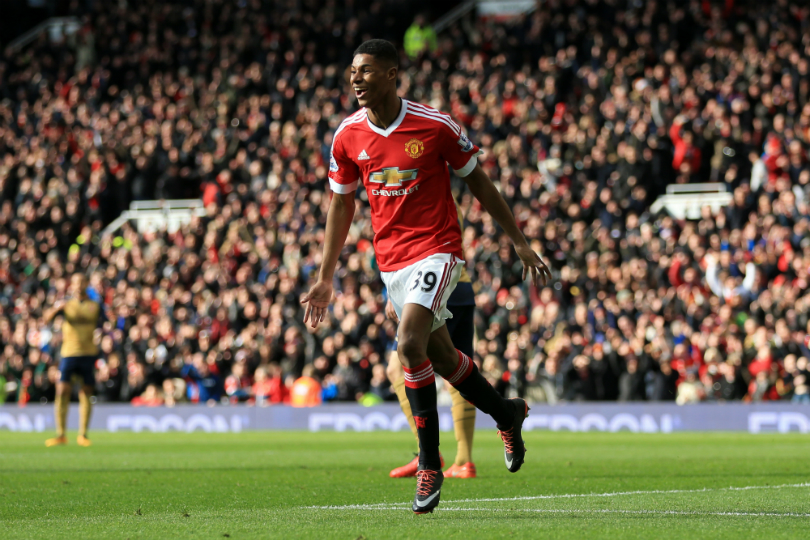
That is exactly what Rashford did when he was named in England’s Euro 2016 roster. He looked at ease playing tournament football in several impressive substitute appearances, which came as little surprise to United coaches, who had deliberately exposed him and their other academy stars to the knockout game during their teens. Still, he did not start a single game as Roy Hodgson’s side were dumped out of the tournament by Iceland in the last-16. Back at Old Trafford, a lack of playing time was of no concern. He scored a further 11 goals in 59 games for club and country in 2016/17.
This season, however, he has faced a very different challenge.
With Marcus struggling for goals in the first half of the campaign and Anthony Martial thriving in the left-sided attacking role, which had made his own the previous season, he has largely been used as a substitute. Alexis Sanchez then arrived from Arsenal in the January transfer window, leading to fears amongst supporters that he could be forced to look elsewhere for regular football. But those who know him best say he will have been delighted by the Chilean's arrival. “Sanchez’s signing is a fantastic opportunity for him to learn from a world-class player,” says Ryan. “It is normal for Marcus to compete with older players, so he will not be overawed, he will be excited.”
Off the pitch, he is doing everything to maximise his potential. When he first arrived at United, Rashford often used to watch Cristiano Ronaldo training in the gym at Carrington and he has now added strength and conditioning work to his daily diet of technical training, which has resulted in a more muscular physique. His body has changed and so, too, has his profile. Dwaine now acts as his agent and an agency has been employed to look after his public relations affairs. But his personality remains the same. In his spare time he enjoys go-karting and watching films at his local cinema with the same close-knit group of friends who have been by his side since he was seven years old.
And he still finds the time to watch plenty of football on TV – just not from the high chair anymore.
